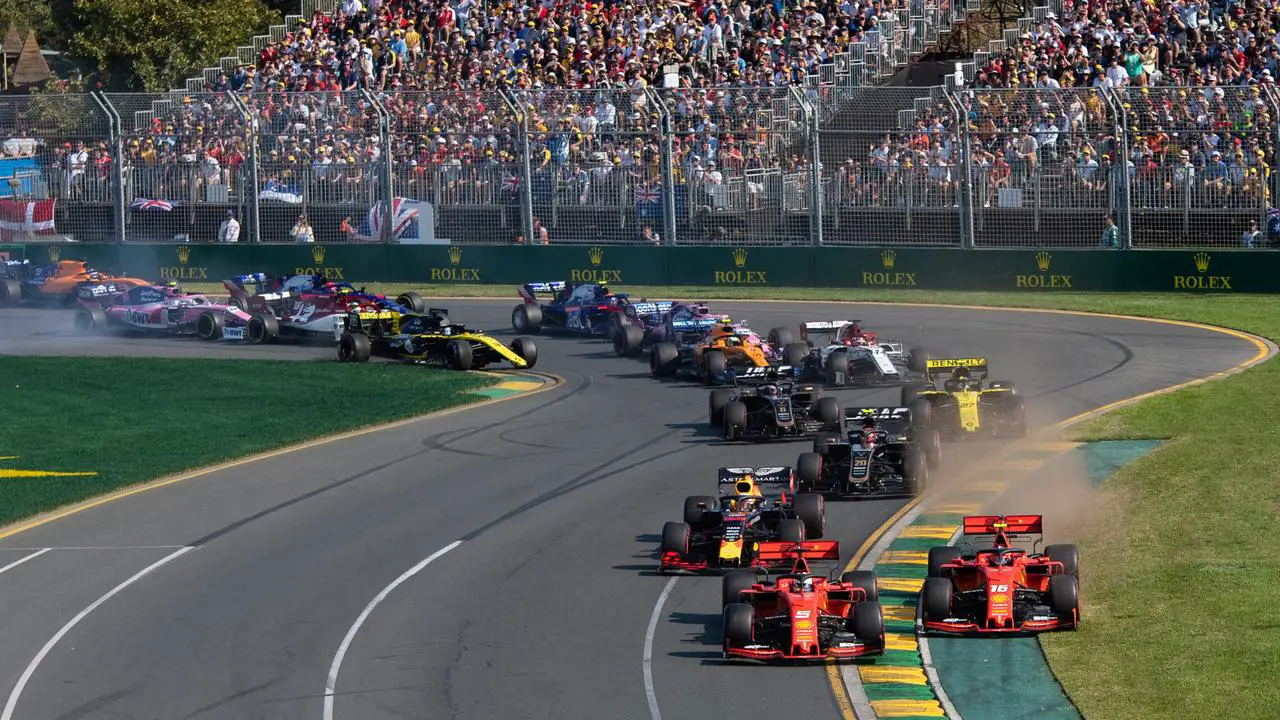The Melbourne GP Circuit, situated in Albert Park, Melbourne, is an exhilarating layout with demanding corners.
In this article, we provide a comprehensive corner-by-corner description of the track. We also include the speeds at which each corner is taken, the drivers gear selection, the exit strategies, and the braking demands.
Additionally, we will discuss the typical temperatures that drivers have to cope with at the Melbourne Grand Prix, offering insights into the environmental challenges they face.
The Australian GP Track Overview
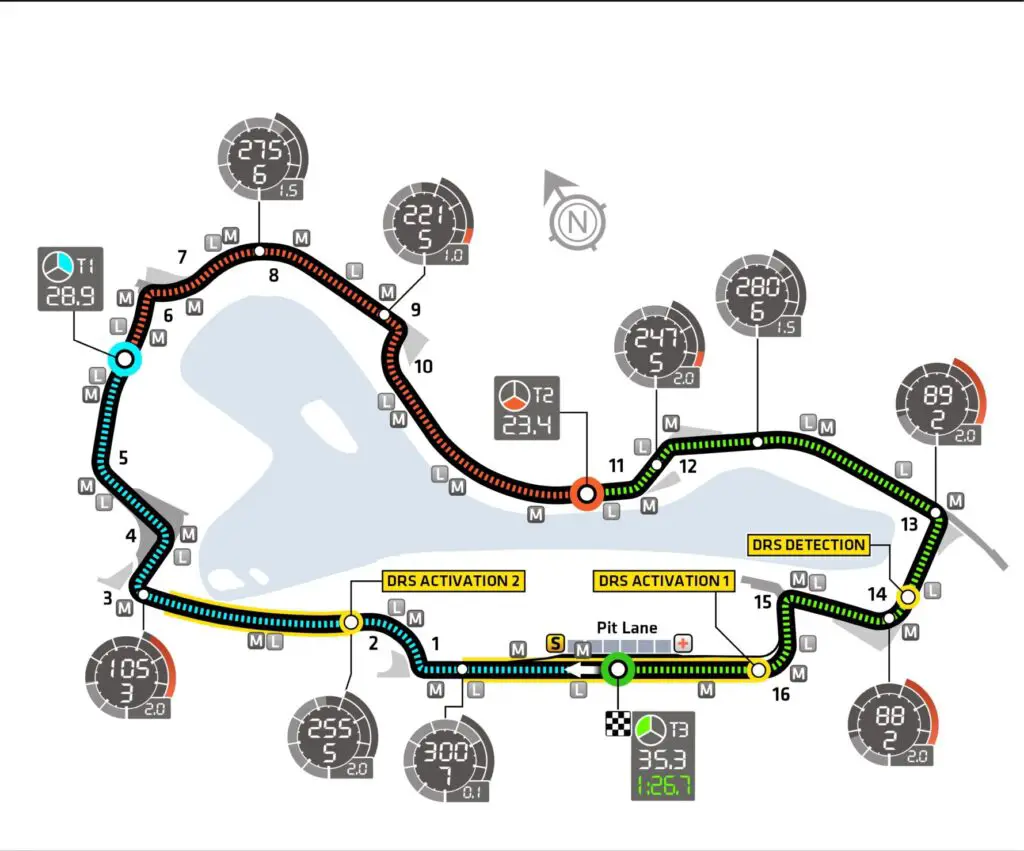
Melbourne GP Track – Turn 1 (Jones)
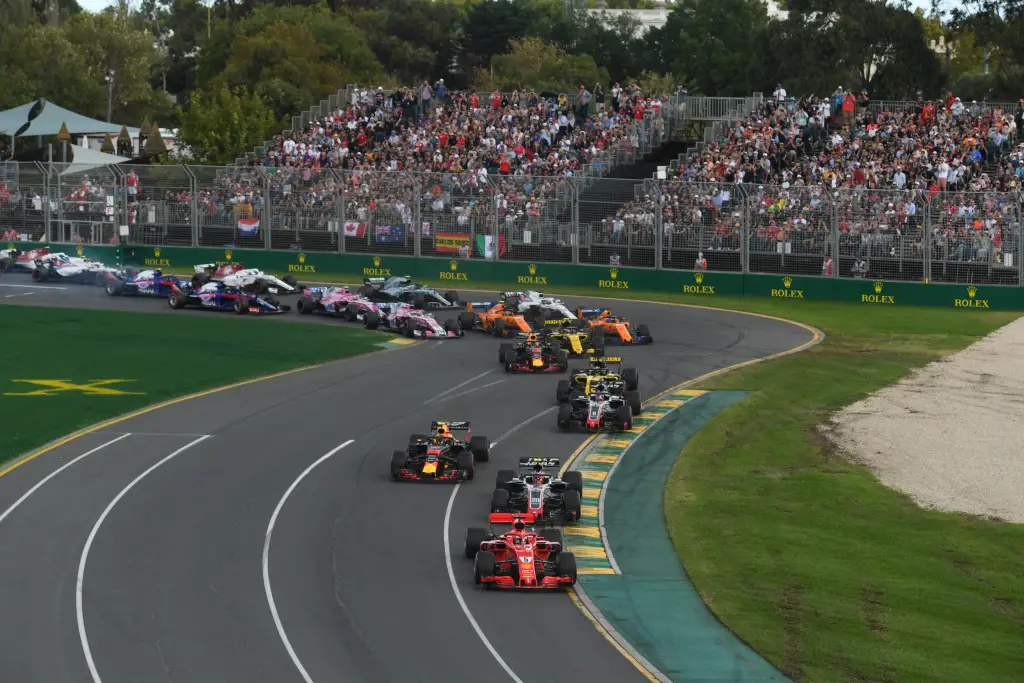
A tricky start to the lap as the F1 drivers attempt to spot the apex to this right-hander. On a full lap the drivers approach turn 1 at 300km/h and run sharply right while lining up for turn 2
Melbourne GP Track – Turn 2 (Brabham)
Turn 1 leads directly into turn 2. Turn 2 is a fast, sweeping left-hander after which the drivers open the DRS wing.
Melbourne GP Track – Turn 3
Turn 3 follows a short straight section. Drivers break heavily to slow down to +-100km/h and into the slow right-handed corner.
Australian GP Track – Turn 4
Turn 4 follows turn 3, and it requires a quick dart over to the right-hand side of the track to open up this tricky left hander.
Melbourne GP Track – Turn 5 (Whiteford)
Doug Whiteford was the first winner of the Australian GP. Turn 5 (Whiteford) named after him and is a gentle right-hand turn which the driver stake at full speed with no braking!
Melbourne GP – Turn 6
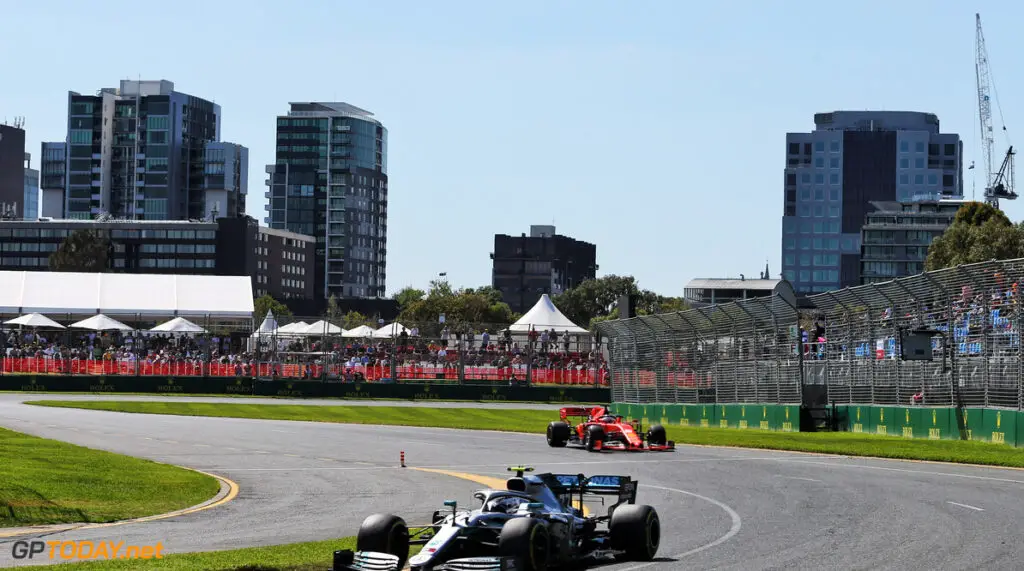
Turn 6 is the entry to sector 2 and follow the high speed straight.
Melbourne GP Track – Turn 7 (Marina)
Turn 6 leads almost immediately into Turn 7 which driven at full speed as drivers gently sweep to left.
Australian GP Track – Turn 8 (Lauda)
Named after the infamous Nikki Lauda, turn 8 is a gentle sweeping corner that the river speed through as fast as possible.
Melbourne GP Track- Turn 9/10
Turns 9 and 10 were once a chicane but is now a right kink before the track bends left again. Drivers have to brake carefully from +- 220km/h and position the car.
This is to ensure that they have the correct line to maximize the exit into turn 10.
Drivers take turn 10 at maximum speed as they negotiate the curved “straight” leading into turn 11.
Between turn 10 and 11 river accelerate to +- +-250km/h.
Australian GP Track – Turn 11
Turn 11 requires a small amount of braking to ensure the car is correctly balanced. The drivers than flick the car into this super-quick left-hander.
By the middle of this straight they are speeding along at 300km/h.
Melbourne GP Track- Turn 12
Turn 12 requires a massive braking effort as the drivers slow to +-90km/h. It is followed by a quick flick back to the right as drivers really attack this chicane.
Australian GP Track – Turn 13 (Ascari)
Turn 13 is a corner entry that is reached after the corner entry was straightened, turn 13 now sees drivers turn beyond 90 degrees for this right-hander, representing the start of the technical section.
Australian GP Track – 14 (Stewart)
Turn 14 (Stewart) is name after the legendary British racing driver – Jackie Stewart. It is another sharp right hander that awaits the driver. Drivers slow down to +-88km/h for this corner.
Australian GP Track – 15 (Senna)
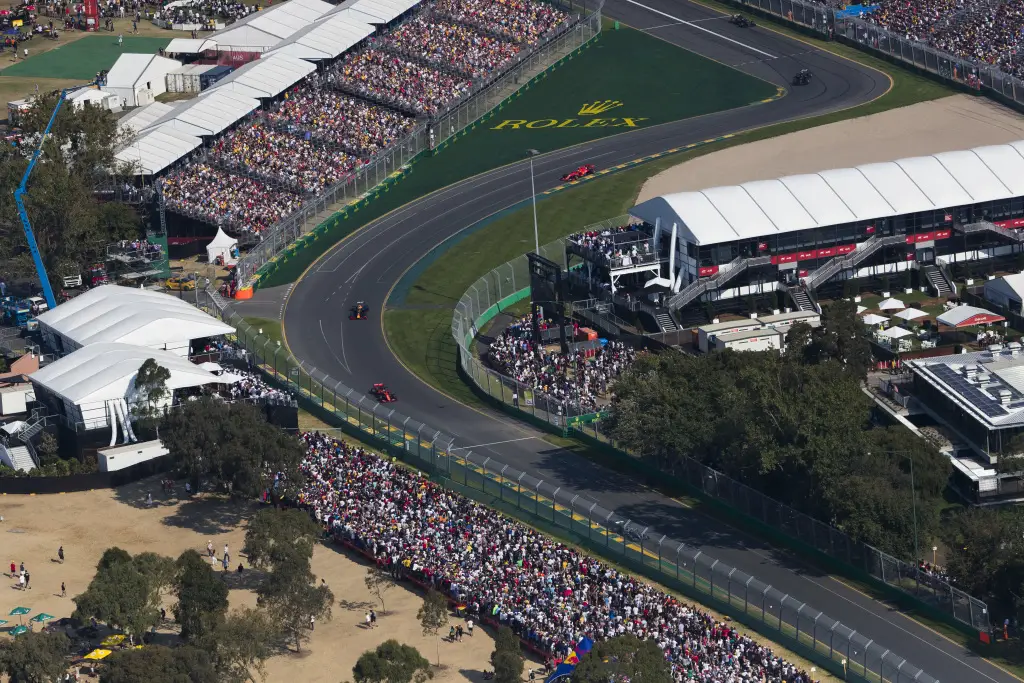
Ayrton Senna is the inspiration for this corner. It is a sharp left hander that feeds into the last turn of the circuit.
Melbourne GPTrack – 16 (Prost)
Alain Prost is the inspiration for this corner. After turn 15 the drivers flick to the right again once last time, gently easing onto the throttle to blast down the start finish straight.
The Typical Temperatures at the Australian GP
The Melbourne GP presents varying temperatures to the drivers due to the race’s timing, which is typically in March. As Melbourne is located in the southern hemisphere, the event takes place at the end of summer and the beginning of autumn.
During this period, drivers often encounter warm to hot weather conditions. The average temperatures range between 20°C (68°F) and 30°C (86°F), with the possibility of higher peaks.
However, weather conditions can be unpredictable, with occasional cooler temperatures or even rain adding an extra layer of challenge to the race.
These temperatures place significant demands on the drivers’ physical endurance. They must cope with high cockpit temperatures and extreme physical exertion during the race.
Hydration and fitness become crucial factors in their performance, as they strive to maintain focus and stamina throughout the demanding race.
Conclusion
The Melbourne GP Circuit offers a thrilling and demanding track layout, challenging drivers at every corner. From the hairpin at 15 (Senna) to the high-speed sweeps of Eau Rouge, turn 8 drivers must showcase their skill, precision, and bravery.
The Melbourne GP is not only a test of driving ability but also a battle against the elements, as drivers contend with high cockpit temperatures and physical exertion. As fans eagerly anticipate each race at Albert Park, the drivers will continue to face the formidable challenges that this iconic track presents.

